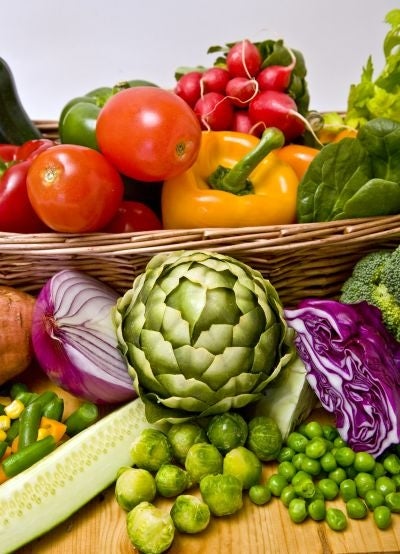Your support helps us to tell the story
From reproductive rights to climate change to Big Tech, The Independent is on the ground when the story is developing. Whether it's investigating the financials of Elon Musk's pro-Trump PAC or producing our latest documentary, 'The A Word', which shines a light on the American women fighting for reproductive rights, we know how important it is to parse out the facts from the messaging.
At such a critical moment in US history, we need reporters on the ground. Your donation allows us to keep sending journalists to speak to both sides of the story.
The Independent is trusted by Americans across the entire political spectrum. And unlike many other quality news outlets, we choose not to lock Americans out of our reporting and analysis with paywalls. We believe quality journalism should be available to everyone, paid for by those who can afford it.
Your support makes all the difference.Rising gas prices in the US are being blamed for more expensive groceries, smaller restaurant portions and a hike in restaurant prices, says a new report released Monday.
And that translates to a reduced splurge on premium ice creams, nights dining out, and an increased reliance on coupons and deals, says market research consultant Technomic.
The results are telling, says Bob Goldin, executive vice-president, noting that consumers have become more sensitive to portion sizes and value for money.
Their survey, for instance, found that 84 percent of the 1,000 consumers polled in April believe that grocery prices have risen in the past three months, while 62 percent believe that restaurant prices have also risen.
For many US consumers, the rising cost of food isn't in their imagination. Both Kraft Foods and Sara Lee hiked prices and McDonald's warned of a small price increase on their menu items as well. These increases have largely been blamed to rising commodity costs.
Rising gas prices related to transportation and shipping are also being passed on to the consumer.
About half of consumers polled remarked that packaged food sizes have gotten smaller, while 32 percent said the same is true of restaurant portions.
That's because companies have already begun shrinking food packages in the last few years in response to rising manufacturing costs. Kellogg's, for instance, reduced their cereal boxes by about 15 percent and raised prices by four percent this year.
Tropicana orange juice also shrunk by eight percent due to rising gas and shipping costs, and Heinz ketchup bottles were also downsized.
Meanwhile, if restaurants have started to shave portion sizes in a bid to help their bottom line, Goldin warns that consumers are on to them and have become acutely sensitive to how much food-bang they're getting for their buck.

Join our commenting forum
Join thought-provoking conversations, follow other Independent readers and see their replies
Comments